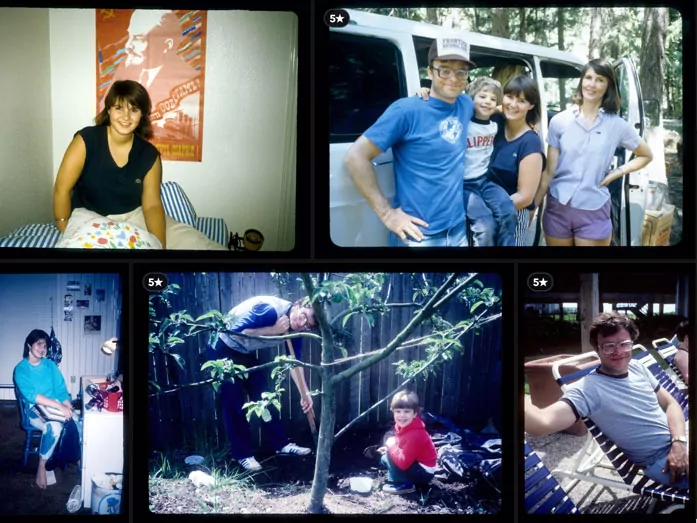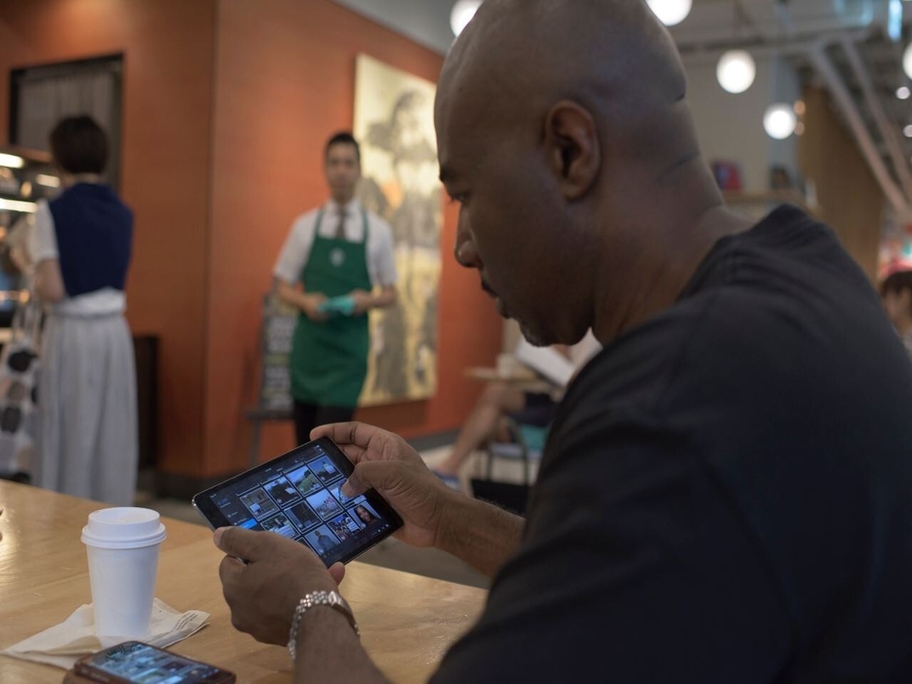I’ve been working as a professional photographer for over 40 years. Being able to catalog and keep track of my images has been a major business advantage that’s allowed me to succeed. Although the business of producing pictures has changed, it’s never been more important to know what you have, how to find it, and how to get it to the client.

Organization is a business advantage
Let’s face it: Photography has always been considered a labor of love, an occupation where buyers think we enjoy our job so much, we don’t need to get paid. For all of us who produce quality work, nothing could be further from the truth. But changing that perception is not easy. Rather than fight that uphill battle, I organize. With organization comes speed, agility, and the ability to outperform the competition. In my office, organization has always included powerful software.
Keeping tabs on my photos with software
In 1981, my first official year in business, I bought a newly developed program called Phototrack. It was an amazing piece of software that allowed me to number, caption, and barcode my 35mm transparencies. Anytime I sent photos to an editor or client, Phototrack was responsible for outputting a contract that kept everybody on the same page. It not only listed which numbered images I had sent, but also provided language that put everyone on notice when it came to using, protecting, and purchasing rights to valuable film originals.
Unfortunately, Phototrack was a DOS program. When Windows came along, Phototrack decided not to join the Windows world and was eventually replaced by a similar but more visual program called Agave. Not long after Agave, the internet was born, and the need to physically send images faded. Which brings me to where I am today: using another piece of software that’s more powerful than all the rest, a program with the funny little name: Mylio Photos.

Nearly 1.5 million photos
From 1976 until today, I estimate I’ve shot over three million images. Half film. Half digital. Most of my film library is still not digitized, but the approximate 25,000 images that have been now reside on my Drobo 8D along with the 1.4 million digital files I’ve collected since the demise of film. Having access to those pictures is essential to keeping them alive.
Like most photographers, I was once using Lightroom. And even though it was hosted on a Mac Pro 2013 that had six cores and 32 gigs of RAM, Lightroom just couldn’t keep up. Scrolling through thumbnails was an exercise in extreme frustration. I had to find something faster — and that’s when Mylio came along.
Depositing your pictures on a hard drive is the film-day equivalent of sticking them in a little yellow box and stashing them in a closet. (For those who have never shot film, the little yellow box was what our transparencies were delivered in from Kodak. Okay, the next question you probably have is, Who’s Kodak?) Unlike throwing pictures in a box, Mylio Photos keeps my work from being buried in the past and, most important, keeps it ready for the future.
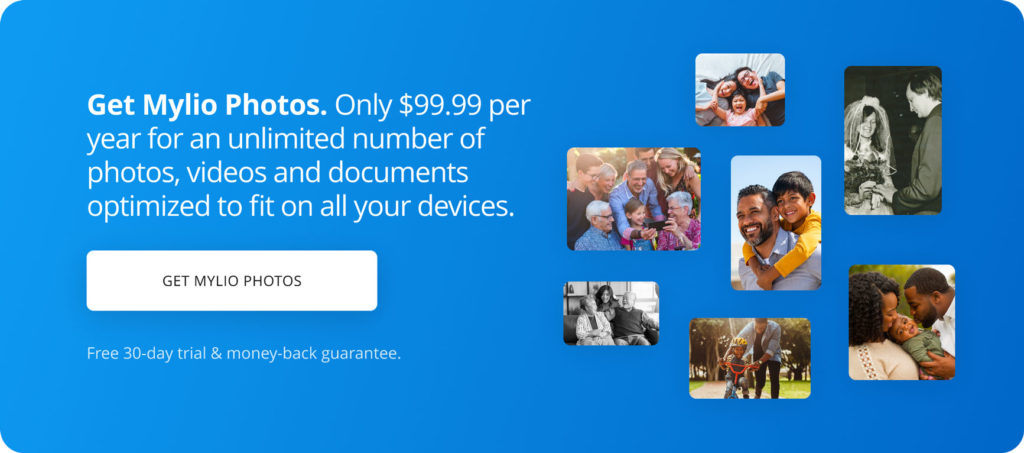
Mylio Photos’ strength is speed
Without a doubt, Mylio Photos’ main advantage is speed. Scrolling through 1.4 million pictures is an absolute breeze, with the thumbnails popping up instantaneously. I’m never left waiting to see the images I’m looking for. Reviewing your pictures at 100% is virtually instantaneous as well. Auto advance and a sticky zoom also contribute to getting things done quickly.
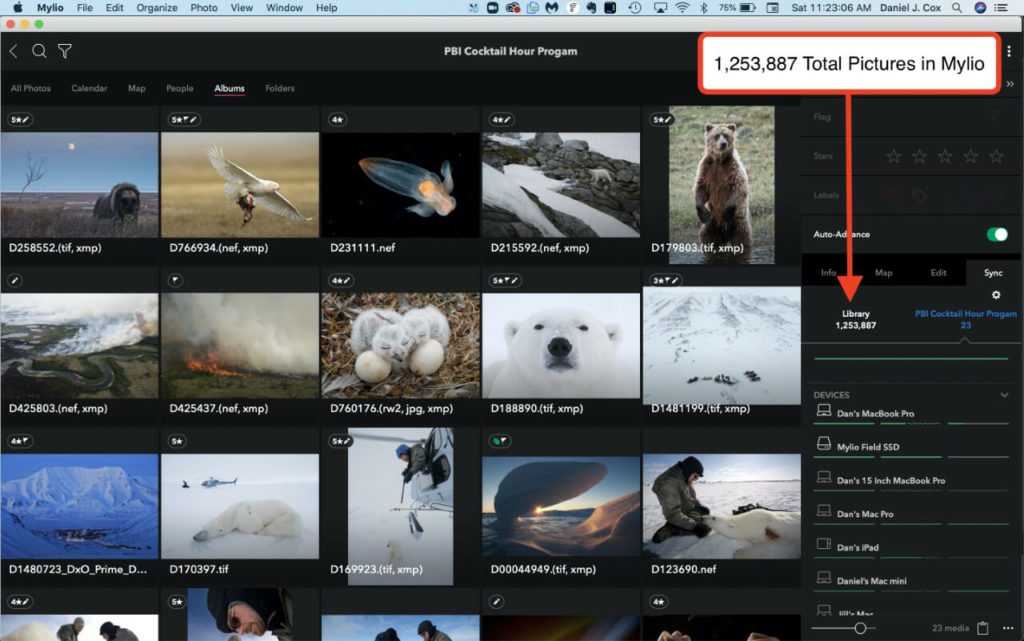
Nothing in the cloud is also an advantage
Mylio Photos’ second key advantage is the fact you can sync numerous devices — in my case 10 — which allows me access to my originals at anytime, anywhere. Mylio Photos syncs all these devices, not by keeping the originals in the cloud, but by simply using the cloud to access all devices.
This is probably the biggest misconception about Mylio Photos: Photographers think it’s a cloud-based archive system. Nothing could be further from the truth. Mylio Photos stores nothing in the cloud. It only uses the cloud to transfer images from device to device.
If you do want a cloud-based storage option, Mylio Photos can sync your pictures to Google Drive and Microsoft Drive, with other services coming soon. But I like having control: I accomplish having my own personal cloud by saving my originals on two Drobo 8D’s. Simple, safe and no monthly fees for the nearly 40 TBs of data that would choke a horse if I had to pay.
Sync across the planet
Another Mylio Photos trick that will absolutely blow your mind is syncing across the world. Not long ago, I was in Romania where I shot around 5,000 images. Each day I would upload the pictures to Mylio Photos on my laptop. We had very quick internet service in the hotels. Mylio Photos connected to my Mac Pro in my Montana office more than 5,400 miles away. When I got back, those same 5,000 images were already safely on my Drobos.
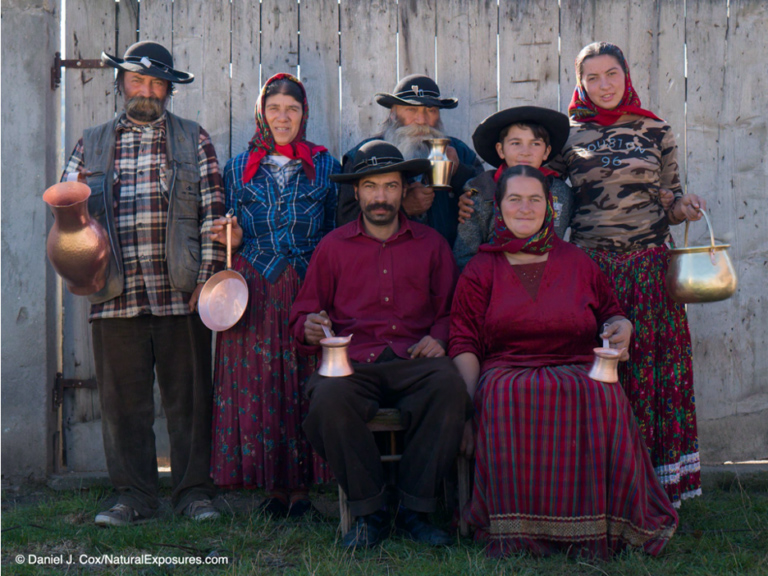
Mylio Photos saves the deal: A small business sales case study
Just imagine you have a client who emails you during the Christmas holidays while you’re away visiting family. That client informs you that they’re interested in purchasing image rights if you can just get the picture to them by the next day. Your office is closed. All your help is taking well-deserved time off. There is no one in the office or even in town that can help solve this problem.
Amazingly, this exact scenario happened to me during Christmas of 2018. Not only was I out of the town for three days, but I had left my laptop behind. My plan was to spend time with family and take a break. Thankfully, I had my 256 GB iPhone 7 with me that had my entire 1.4-million-photo Mylio Photos Library on it. I simply connected to my family’s WiFi, selected the image on my phone and asked Mylio Photos to download the original. Within minutes, I had the original, and I was able to forward it to the client. I made the deadline and the sale. Anytime, anywhere is the power of Mylio Photos.
All devices, all the time
In our office we have ten devices running Mylio Photos. They include iPhones, iMacs, an iPad and Mac Pro, all of them with access to the same 1.2 million-image database. My wife, Tanya, who regularly needs photos for promoting our Invitational Photo Tours, can get what she needs at her leisure. Our office manager, Jill, who deals with editors, agents, and other clients, can do the same.
Gone are the days where Jill and Tanya would regularly message me asking for a particular image for whatever project they were working on. Our office happens to be using all Apple products, but Mylio Photos works just as well with Windows and Android.
When I was running Aperture and eventually Lightroom, having to stop what I was doing to go search for an image was a necessary evil. The ability for others to access my photo library has been an absolute game-changer. I can’t tell you exactly how much time this saves, but I can assure you it’s massive.
I’ve always thought the Aperture and Lightroom model of one person access at a time was a huge, huge time-sink. If it’s just you working your library then it’s no big deal. But if you have a partner who’s giving you a hand, you have no idea how much you’ll love Mylio Photos’ multiple access capabilities. Once again, Mylio Photos is anytime, anywhere, to anyone you give access to.

Precious memories improve quality of life
Having access to my pictures has never been easier thanks to Mylio Photos. While all of the examples I’ve given above were based on my need to make a living, equally important is the need to keep track of precious memories. Family is important to most of us, and that becomes more obvious the older we get.
Because this story is dedicated to the way Mylio Photos helps me with my business, I didn’t even mention Mylio’s tools that stop the clock and make me reflect. Facial recognition in Mylio Photos is absolutely mind-boggling. You’ll be stunned at how accurate this tool is. Life events and other organizational tools for personal memories are equally impressive.
I use Mylio Photos mostly for business, but it’s the family pictures that frequently draw me in. I call them “Mylio memories.” Regularly, while searching for an image I need for business, family photos appear in my million-plus library. It’s often impossible to stay focused because family pictures have a mesmerizing way of making you stop in your tracks and dream backwards. When my days in business are done, it’s the family pictures I’ll cherish the most.
Mylio Photos is the best-kept secret for small businesses
After writing all of this, I can’t help but wonder why more professionals have not found Mylio Photos. Having access to your pictures is the difference between sales or no sales. As anyone self-employed knows, time is money. The amount of time it took to find pictures the old way was a terrible bottleneck. Mylio Photos has changed all that.
Unfortunately in the natural history world I work in, the prices paid for pictures has dropped to almost negligible levels. But there are still specialties where quick access can be a business advantage. Specialties like events, weddings, commercial, real estate, and others. I predict it’s only a matter of time before more professionals finally see the Mylio Photos light and escape their Adobe tunnel vision.
To read Cox’s follow-up story about more of Mylio Photos’ key tools, see Inside Mylio Photos’ Features with Daniel J. Cox Photography.

Daniel J. Cox is a celebrated nature photographer who has been documenting the outdoors for over 40 years. His work has been featured, among other places, on covers of National Geographic magazine. Visit Natural Exposures to learn more or connect with Dan.

